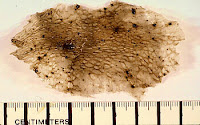Deep under the islands' surfaces, the groundwater is moving.
It flows, of course, from the mountains toward the sea. As rain falls on the surface of islands, it percolates down and forms a vast underground lake within the volcanic matrix. That lake is constantly at flow seaward, where the island's fresh water leaks into the salt water surrounding the islands. In some areas, swimmers can feel its cool flow where it enters the ocean below the surface near shore.
But the groundwater also moves up and down.
Researchers have long known that the water in the islands' aquifers rises and falls with changes in atmospheric pressure. But it also moves with the tides, and with periods of storm surf along the coast.
When storm surf pounds an island's shore, the change in the height of the groundwater can be measured in wells miles inland, according to research by Kolja Rotzoll, of the U.S. Geological Survey's Pacific Islands Water Science Center.
Rotzoll and Aly El-Kadi, both associated with the University of Hawai'i UH Dept of Geology and
Geophysics Water Resources Research Center, published their study on the subject in the Journal of Hydrology.
The work was part of Rotzoll's work toward his doctorate degree. Its aim was to better understand the movement of water in the aquifers under islands. In research on Maui, he found that the impact of a major storm surf event on the coast can be measured as a rise in the water level in wells more than three miles in from the shore.
“The change in water level travels through the aquifer and can be detected as a net rise in the ground-water table kilometers away from the coast,” he said in an email.
The effect is apparently the reaction to a rise in sea level at the coast. When storm surf occurs, it shoves vast amounts of water up against the island, creating a rise in the overall level of the water.
That rise is reflected in the groundwater, although the damping effect of the island's rock does interfere with the reaction. The farther inland you measure it, the less is the rise in groundwater, and the longer is the delay in a reaction to a coastal surf event, says the paper by Rotzoll and El-Kadi.
“The research shows how ocean processes (waves, tides) are connected with responses in the aquifers,” Rotzoll said.
In areas with dense rock, the flow of fresh water can be slowed, and the reaction of ocean events like storm surf can be muted. In these areas, the water level may be significantly higher near the coast than the sea level.
On the other hand, in areas where there is little interference with the water flow, the movement is speeded, and coastal areas have groundwater much closer to the sea level.
“If the coast does not have a confining sediment layer like we have in the Pearl Harbor/Honolulu area, the water-table is close to sea level near the coast. Also due to the missing caprock, ocean water-level changes are transmitted more easily. Hence, in times of high tides or big swell events, the natural ground-water flow gradient could be reversed, which has consequences for not only ground-water flow, but also contaminant transport and might impact water quality,” Rotzoll wrote.
The Kona coast, where water readily flows through porous lava rock, is an example of an area where the action of the ocean can have an exaggerated impact on the groundwater near the shore, he said.
© 2008 Jan W. TenBruggencate
























